One of the things I love about Nikon is the vast amount of cheap vintage glass that is out there on e-bay, plus their backwards compatibility – all the way back to 1950 or thereabout. Than means that most of the Nikon glass that they have produced since back then, can be used on a modern Nikon camera. And if you don’t like Nikon camera bodies, you can buy an adapter to fit the glass on the camera body of your preference.
Back in the film days full frame (FF) was the standard, as it was 35 mm film and not a digital sensor that sat in the cameras. That changed during the 1980’s and later, so that most cameras today have a digital image sensor. And for starters the digital sensor had the same size as the negative on a film – approximately 35 mm.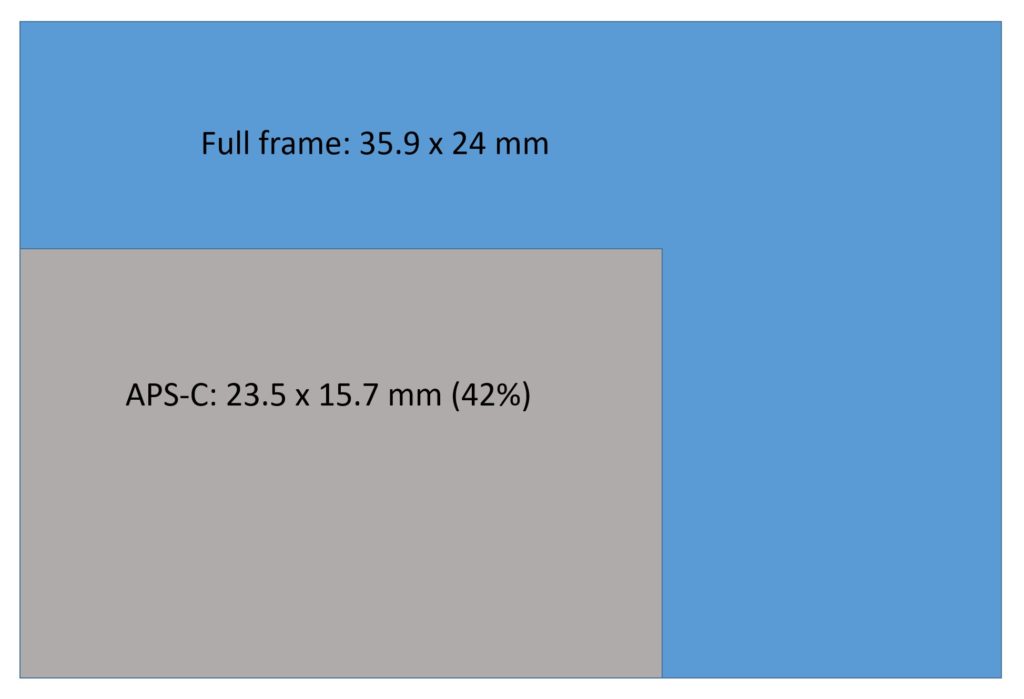 What also changed was the amount of available sensor sizes. The so called APS-C and other reduced formats were introduced, along with new lenses. The advantage being that it was possible make lighter and cheaper glass, as the light would have to cover a smaller sensor. Although being smaller, the APS-C sensors could easily cram say 24 MP into the sensor despite the reduced size and hence a new fan base was created – people who do not want to carry heavy glass but on the other hand do not like the idea of reducing the resolution of the sensor.
What also changed was the amount of available sensor sizes. The so called APS-C and other reduced formats were introduced, along with new lenses. The advantage being that it was possible make lighter and cheaper glass, as the light would have to cover a smaller sensor. Although being smaller, the APS-C sensors could easily cram say 24 MP into the sensor despite the reduced size and hence a new fan base was created – people who do not want to carry heavy glass but on the other hand do not like the idea of reducing the resolution of the sensor.
Nikon made the APS-C cameras so that they used the same mount – the so called F-mount. That means that you can mount glass designed for APS-C on a full frame camera, and the other way around: mount full frame (FF) glass on a APS-C camera. It is the latter case I want to explore in this post, to see what happens.
In the best of worlds I would have shot the test shots with two Nikon cameras, say the D700 (full frame) and the D7500 (APS-C) or the D5600 (APS-C), but I lost my D7500 in a salt water accident and I have sold my D5600 to finance new gear, so I simply do not have a Nikon APS-C camera anymore. Luckily, I do have a Fuji X-T3 camera, which has an APS-C sensor size. And with an adaptor from K&F concept, I can mount the full frame lens on the Fuji camera:
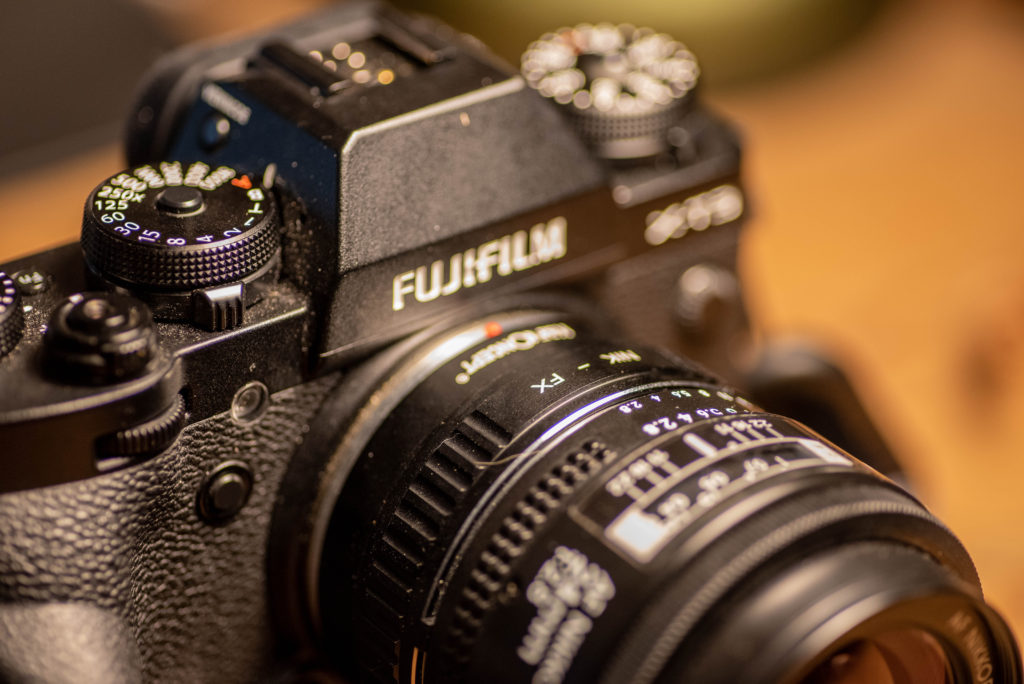
The disadvantage is that I now have to focus manually, and that the camera cannot control the aperture so I have to set the aperture on the lens itself. Further, the EXIF information that I get with the picture does not show the aperture anymore, as the lens and the camera cannot “talk” to each other – it is a dumb adapter. But for the purpose of this test, it is no big issue.
I am testing here with a wide lens, the Nikon 24mm f/2.8, and first I want to show you the picture taken on the Nikon D700 full frame body. The subject here is a little clay figure and I have put some items on the table to give some sense of the depth in the picture:
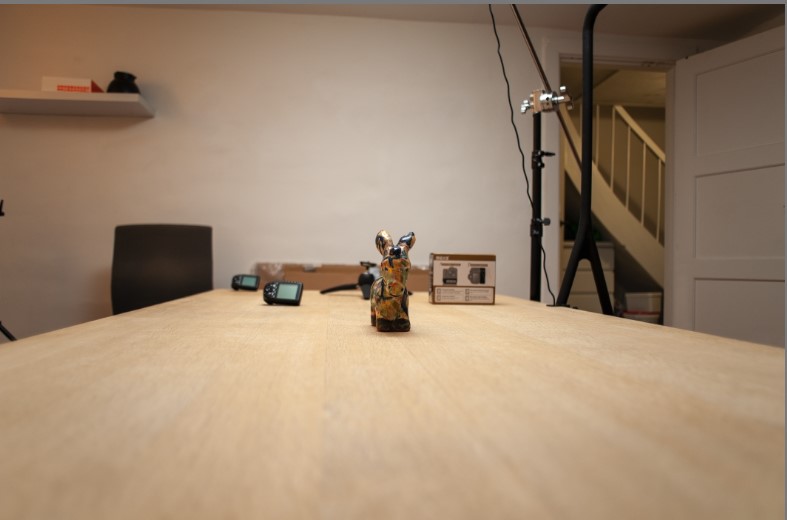
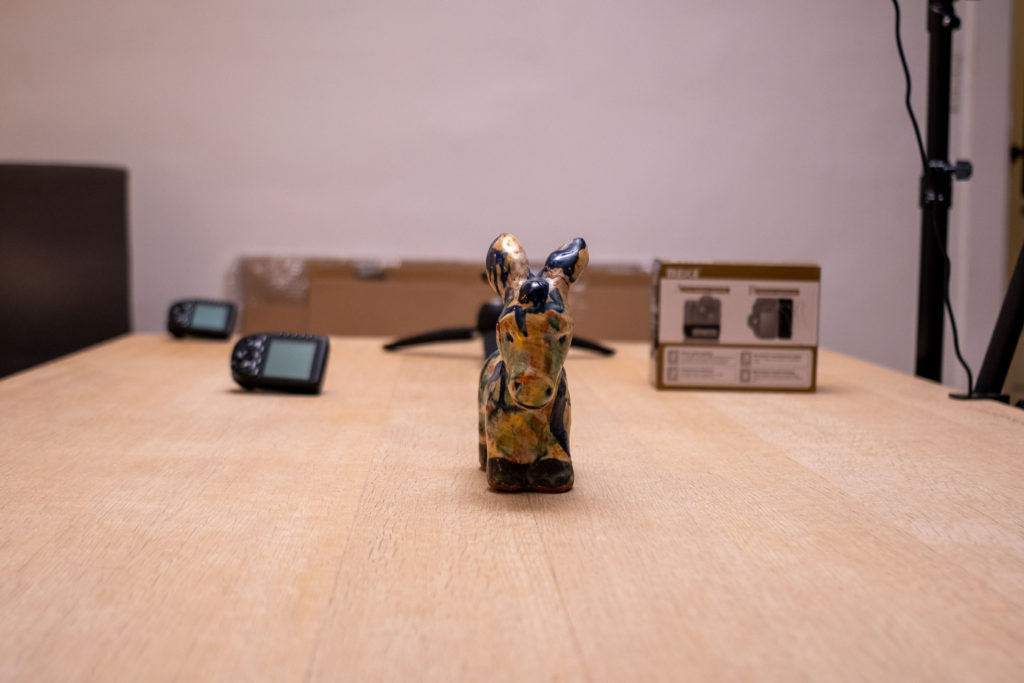
The second picture is taken on the Fuji X-T3 using the same lens with the adapter shown previously. As you can see, it seems like the little figure on the table has moved much closer and the frame is much less wide. For example, you cannot see the door to the right anymore and the stands to the right are almost gone.
This is known as the crop factor. When you use full frame glass on an APS-C sensor, then the picture is cropped because the sensor only uses the center part of the light from the glass.
The crop factor is typically 1.5 (for Cannon I believe it is closer to 1.6), and shooting with a 24 mm FF lens on an APS-C sensor as I have here, is the equivalent of shooting with a 36mm lens on a FF sensor. That explains why the frame is less wide and the subject appears closer.
Some say the crop factor is also to be applied to the aperture, so that the 24 mm f/2.8 is actually a 36 mm f/4. Below I have the two shots next to each other in Lightroom, where I have zoomed in on the FF version to the right, so that the clay figure has roughly same size. And then I have put some small lights that I normally use to test bokeh, to see if the full frame version would yield more background blur than the APS-C one. As far as I can tell, they are very similar:
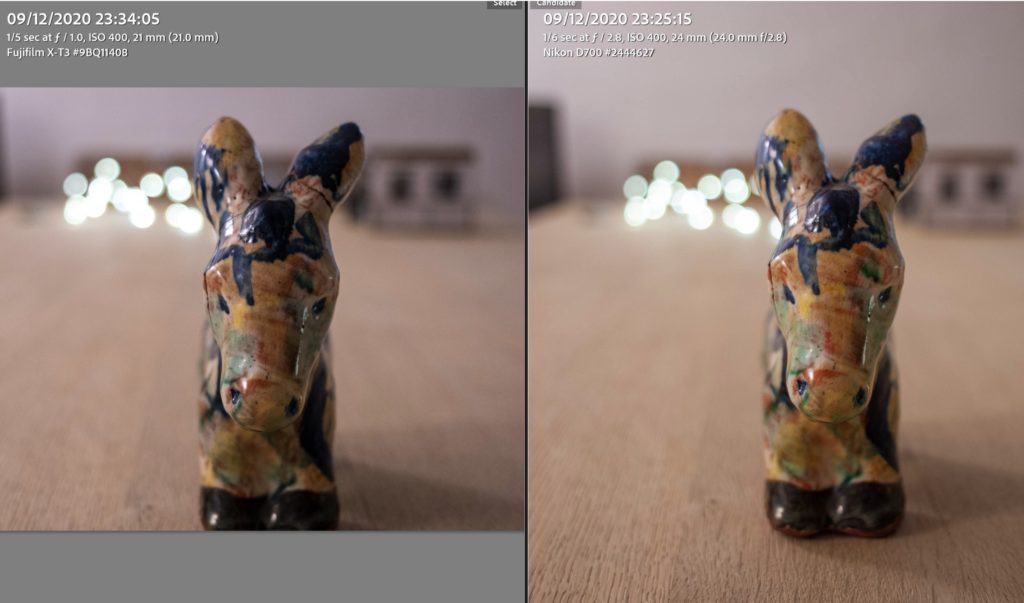
The reason could be that f/2.8 and f/4 are both very wide apertures where the level of background blur does not change much, but from this test alone, I cannot conclude that you need to apply the crop factor also to the aperture to achieve equivalence.
Thank you for reading this far! Please don’t hesitate to leave a comment below or click the like button!
